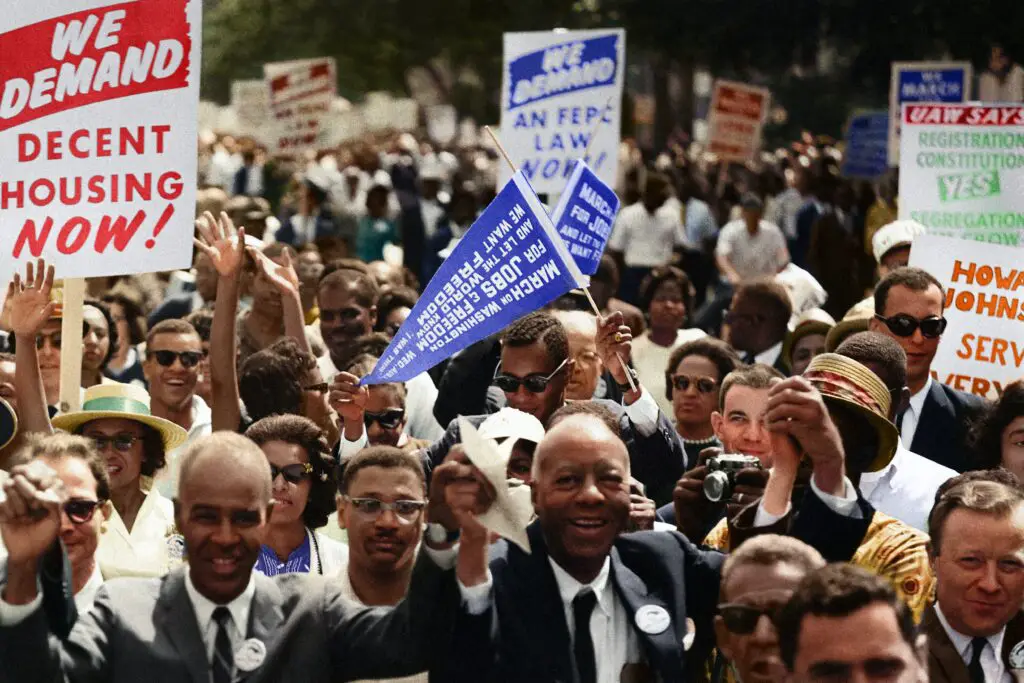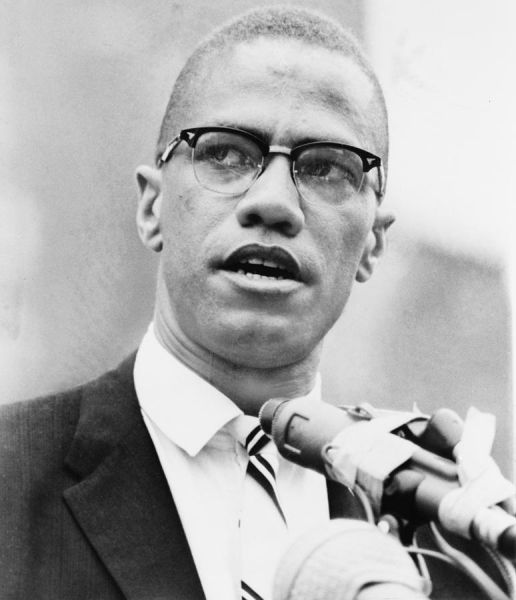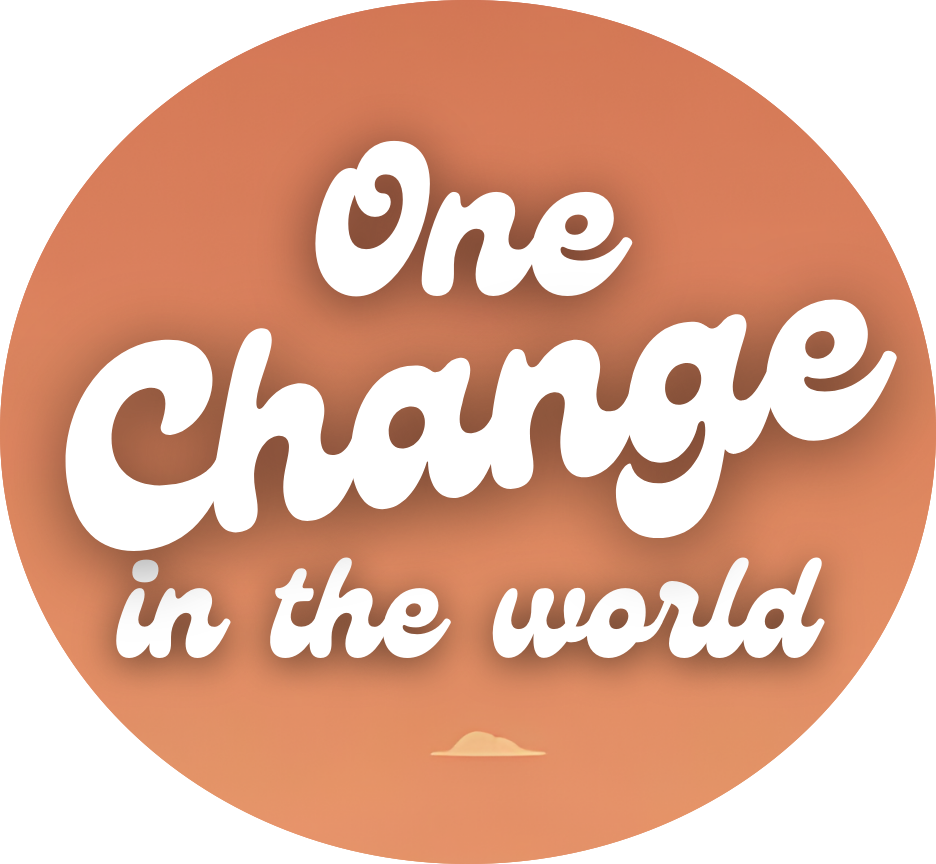To understand the project of a popular history of the United States, intended by Howard Zinn’s historian, go here a popular history of American society after 1945. This engaged history is intended as a rebalancing between the official textbook version and the real contemporary history of American society. It is about the place of blacks in the United States, particularly in the 1950s, 1,960s, and 1,970s.
The Black Revolt
The awakening of the Black American conscience
The decades 1950–1960, and 1960–1970, are characterized by the emergence of a strong movement of revolt on the part of the Black population.
Art participates in the awakening of these consciences. It is, first of all, music, through blues and jazz. It is then literature, with for example the works of Margaret Walker and Richard Wright, notably poetry, in the line of Paul Laurence Dunbar, Langston Hughes, Claude McKay.
Black activism, which had emerged in the 1930s, became quieter during the Second World War. The first revolts in Asia and Africa challenged this silence.
At the end of 1946, a civil rights committee was initiated by Truman. Truman, challenged by Henry Wallace in the presidential campaign, signed an executive order in 1948 to promote racial equality in the military, where segregation was still in effect.
The Supreme Court also evolved, through successive decisions: in 1954 the doctrine of “equality in separation” was abandoned. The Brown vs. Board of Education case was an opportunity to criticize the feeling of inferiority that segregation could provoke, and to declare that equality in separation was not valid within the school. In spite of this important decision, it is to be noted that in 1965 + 75% of the schools in the South were still under the regime of segregation.
Rosa Parks
While in the early 1960s, revolts broke out in the South, they turned into real conflicts in the North as well at the end of the decade.
The case of Rosa Parks is illustrative in this sense. The 43-year-old Rosa Sparks explained why she refused to obey the laws of Montgomery, the capital of Alabama, by sitting in the whites-only section of a bus in 1955. “When and how could we assert our rights as human beings?” she testified three months after her arrest. The entire Black community revolted in the city of Montgomery, boycotting transportation; the segregationists reacted strongly, using bombs, including one at the home of Martin Luther King, who was among the boycott’s initiators. The boycott was rewarded with success when, in November 1956, the Supreme Court banned segregation in municipal transportation.
These events served as an example throughout the South for the next 10 years. Martin Luther King’s voice began to find listeners, while some criticized his naiveté.
Sit-ins and Freedom Rides
Robert Williams, president of the NAACP, encouraged Blacks to defend themselves, and with arms if necessary. Blacks did not use violence in the following years, however, conducting sit-ins in five Southern states.
The Congress of Racial Equality (CORE) in the North organized Freedom Rides, which consisted of blacks and whites riding together on buses to the South, which led to significant violence. Another Freedom Ride was organized between Nashville and Birmingham by the Student Nonviolent Coordinating Committee (SNCC), which initiated the sit-ins, and ended in a night in jail and violent confrontations as well.
But these Freedom Rides really began to worry about the US state when they attracted international press.
The clashes continued in many cities, often violently. In June 1964 the civil rights movement organized an event near the White House. There was no follow-up, and the incidents were repeated.
The Reaction of Congress and the Presidency
The violence, the anger of the Blacks, and the echoes it left in other countries of the world, forced Congress to accelerate reforms. Civil rights laws were passed in 1957, 1960 and 1964, but were often not acted upon.
President Johnson initiated a Voting Rights Act in 1965, which was particularly effective this time.
In 1952, only one million blacks were registered to vote in the Southern states, but by 1964 there were two million, and by 1968 three million.

The March 1963 on Washington
The March 1963 on Washington was transformed by Kennedy into an ecumenical rally in an effort to ease tensions. Martin Luther King gave his most famous speech: “I have a dream.” But this speech remained too moderate in the eyes of many Blacks.
They were more in tune with the message of Malcolm X. This one gives an account of the disillusionment of the Blacks as for this march, which was to be “the Black revolution”, according to the words of Malcolm X: “It was not even a march any more, it was a picnic, a real circus.”
Living conditions for blacks remained difficult: places of worship were targeted by bombs, and the unemployment rate was still 12.1% among nonwhites, compared to only 4.8% among whites (spring 1963 figures). According to government statistics, 1 in 2 blacks lived below the poverty line at the time.

Malcolm X
The assassination of Malcolm X and Martin Luther King
From 1964 to 1966, and especially in 1967, riots multiplied, with their share of bloodshed and death. The expression “Black Power” became popular, to designate the mistrust towards the rights supposedly granted to Blacks. It is this idea that Malcolm X embodies. In 1964, he declared, “if enough of you are radical and stay radical long enough, you will get your freedom”. His murder in 1965 led to Malcolm X becoming a martyr for the Black cause.
The moderate speech of Martin Luther King, if it remains listened to, is replaced by more radical positions, such as those expressed by Huey Newton, of the Black Panther movement, which encouraged legitimate self-defense, by arms.
The law passed by Congress in 1968 was repressive against anyone who encouraged riots, particularly by using a federal service, and could be punished by 5 years in prison.
Martin Luther King, by criticizing the war which for him contributed to the poverty of the Americans, and especially of the Blacks, became the target of the FBI which recorded his conversations and even sent him threatening letters.
In Memphis, on April 4, 1968, Martin Luther King was assassinated on the balcony of his hotel, without the perpetrator being arrested.
If the laws were favorable to Blacks, in fact, the courts would not have protected blacks well “against violence and injustice”, according to Howard Zinn. He even fought against Black activists, using guns and violence, through the FBI.
The Relative Improvement of the Living Conditions of the Black Population
In the early 1970s, the American system was trying to protect itself from the force and dangers of Black riots. More and more Blacks were voting and entering political institutions. In 1977, there were 2,000 Blacks in the administrations of 11 Southern states, compared to only 72 in 1965.
Nevertheless, they remained at a disadvantage: while they represented 20% of the population in the South, they held barely 3% of elected offices.
In the North, blacks began to compete with the most disadvantaged whites, particularly by moving into the housing they occupied. Concentrated in ghettos, blacks retained a belief in improving their condition, but there was no real protest movement from the 1970s onward, or only a small one.
→ A popular history of US society after 1945
Originally posted on 21 April 2021 @ 16:34
